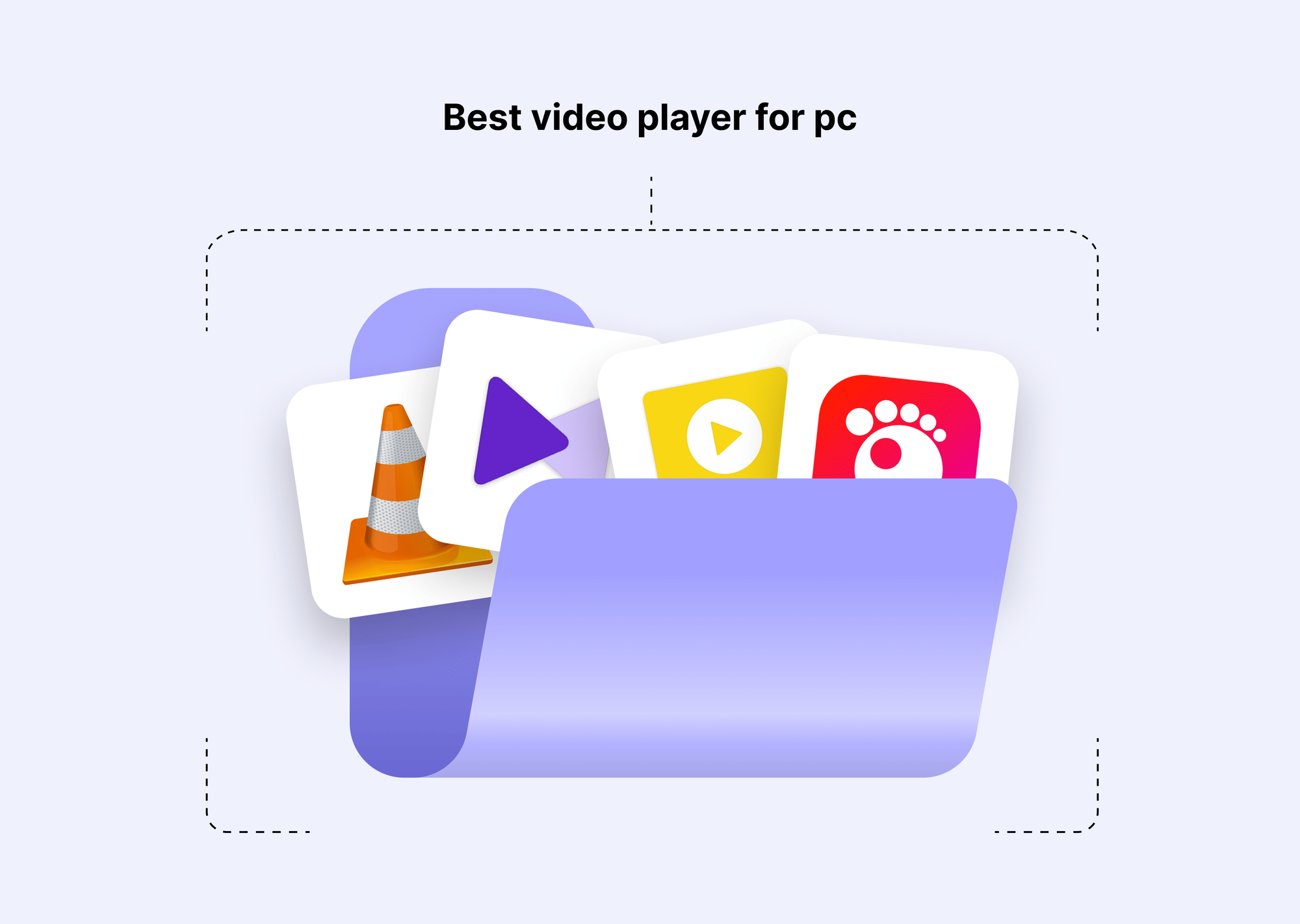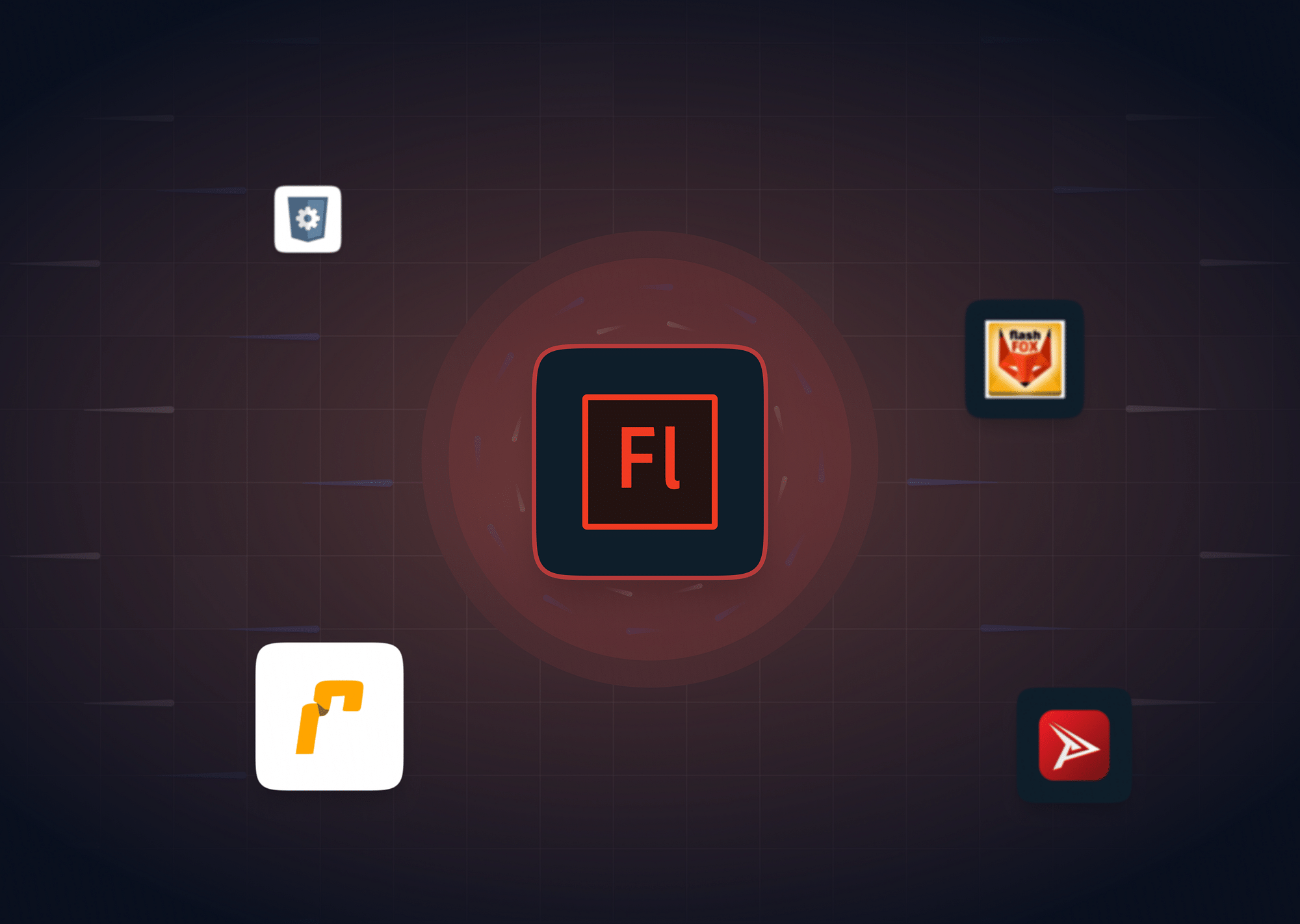If video drives your marketing, training, support, or client portals, you need more than a quick embed. You need Webflow video hosting that is secure, performant, and brand-safe. By pairing Webflow with Gumlet, you can add video to Webflow using an encrypted, adaptive Webflow video player that looks like your site, plays smoothly on every device, and prevents unauthorized sharing. This guide explains why native options fall short, then walks you through adding a video to Webflow with Gumlet for secure streaming, analytics, and complete control.
Why You Shouldn’t Rely Only on Webflow’s Native Video Options
Webflow’s built-in tools are excellent for quick layouts, yet they are not designed for robust, secure distribution at scale.
- Background video: The Webflow background video element is excellent for visual polish, but it supports only limited formats and is intended solely as a background effect. There is no player UI to customize, no playlist logic, and no advanced analytics. It is not suitable when you need a controllable Webflow video player for gated content or learning libraries.
- Video uploads: Direct Webflow upload options are limited to around 30 MB for background videos, which is too low for most high-quality content. There is no DRM, no tokenized URLs, and no domain restriction. Once shared, files can be easily downloaded or re-embedded, undermining security.
- Embeds from YouTube or Vimeo: A Webflow embed video from public platforms introduces their branding, suggested videos, and potential ads. You also lose meaningful access control. Linking out to external players disrupts user flow and causes leakage from your site. For businesses that need brand consistency and control, public platforms offer limited governance.
- Security gaps: With native options, you cannot enforce domain-restricted playback, signed or expiring links, or studio-grade encryption. That leaves you exposed to link-sharing and piracy. If you handle paid content, internal training, or client-only resources, this is a serious risk.
Step-by-Step Guide: Adding Secure Gumlet Video Playback in Webflow
When it comes to Webflow video hosting, adding secure playback is about protecting your content while keeping it fast, responsive, and on-brand. Gumlet makes this simple by providing encrypted delivery, domain-restricted playback, and adaptive streaming, ensuring every viewer gets the best experience.
Here’s how to add a secure Gumlet video to Webflow step by step, from upload to customization.
Step 1: Upload Your Video to Gumlet
Before integrating, prepare your video properly for professional Webflow video hosting:
- Prepare your source file – Export your video in a standard high-quality format such as MP4, MOV, or WebM. Avoid compressing too much to maintain playback clarity.
- Upload to Gumlet Dashboard – Log into your Gumlet account and upload your video under the “Video Hosting” section. Gumlet automatically processes your file into multiple renditions for adaptive bitrate streaming.
- Enable secure streaming – In your video settings, enable HLS or DASH encryption to protect your file from direct downloads. If your business requires additional protection, enable Digital Rights Management (DRM) to prevent screen capture and piracy.
- Set domain restrictions – Under the “Access Control” or “Playback Settings” section, whitelist your Webflow domain. This ensures your Webflow video player will only stream on your approved websites.
These steps lay the foundation for secure Webflow video hosting, ensuring no one outside your domain can access your content.
Step 2: Get the Secure Embed Code
Once your video is processed and security is configured, you’ll generate the Webflow embed code for the video.
- In your Gumlet dashboard, navigate to the video you’ve uploaded and open its settings.
- Select “Embed Options” to configure how your video will appear. You can choose between a standard iframe embed or a lightweight JavaScript embed.
- Customize your player appearance—select your preferred player theme, control visibility, and default playback behavior (autoplay, muted, loop).
- Gumlet automatically generates the secure embed code that includes encryption and domain restrictions. Copy this code.
The Gumlet embed ensures that your Webflow video will stream securely with adaptive bitrate technology, automatically adjusting quality based on your viewer’s connection speed.
Step 3: Add the Embed Code to Webflow
Now it’s time to integrate Gumlet into your Webflow project.
- Open the Webflow Designer and navigate to the page or section where you want your video to appear.
- Drag the Embed Element (from the “Add Elements” panel) into your layout.
- Paste the secure Gumlet embed code inside the HTML field.
- You can place this embed inside hero sections, feature grids, or even link it to your Webflow CMS video collection. This allows dynamic playback for different posts or courses from your CMS.
- If you want a Webflow background video effect, position the embed within a div block and layer it behind your content. Add an overlay or play/pause button for better UX.
This method ensures your Webflow add video setup is both flexible and protected, combining Webflow’s design freedom with Gumlet’s secure streaming.
Step 4: Customize the Video Player in Webflow
After embedding, you can easily adjust playback behavior and responsiveness to fit your design.
- Autoplay, loop, and mute options: In the Gumlet embed code, you can add parameters such as autoplay=1, muted=1, or loop=1. For Webflow autoplay video to function correctly across browsers, ensure the video is muted.
- Responsive scaling: Set the container width to 100% and apply an aspect ratio (e.g., 16:9 or 4:3) for your video div. This ensures your Webflow video player looks sharp on all devices. You can also use Webflow’s “Responsive Settings” or Flexbox to fine-tune spacing.
- Accessibility and captions: Always include captions or subtitles for inclusivity. Provide visible controls or keyboard accessibility when appropriate.
- Preview and test: Publish your site and check the video playback across mobile, tablet, and desktop to confirm that adaptive streaming and security restrictions are working as intended.
With these steps, you can confidently add video to Webflow using Gumlet and deliver professional, secure playback that reflects your brand identity. This method avoids the limitations of Webflow's video uploads and public embeds while providing encryption, scalability, and full creative control over your Webflow video hosting setup.
Why Gumlet is the Best Choice for Secure Webflow Video Hosting
Gumlet complements Webflow with the controls businesses need for private and professional distribution.
- Secure video streaming: Delivery over HLS or DASH with encryption prevents simple downloads. With optional DRM, even determined attempts to capture content are mitigated. This is critical for gated courses, paid events, and proprietary training.
- Domain-restricted playback: Limit playback to your domains. If someone copies your embed code, the player will not run elsewhere. This single feature dramatically reduces leakage and piracy.
- Adaptive bitrate streaming: The player automatically selects the best rendition for each viewer, minimizing buffering and improving completion rates. For busy sites and global audiences, this is essential performance engineering.
- Customizable, ad-free player: Keep your brand consistent—no third-party watermarks, no suggested videos, no ads. Your visitors remain within your experience, and your conversions stay on your site.
- Analytics and scale: Track starts, completion, and engagement to evaluate content effectiveness. Pair this with your marketing and product analytics to see how video drives sign-ups, demos, and retention. Since small file limits do not constrain you, your library can grow without restructuring content around native caps.
How It Compares
When evaluating Webflow video hosting options, Gumlet stands out for its balance of simplicity, performance, and professional-grade security. To understand its value clearly, it helps to compare Gumlet’s approach to both public platforms and specialized marketing video hosts.
Compared to public platforms (YouTube, Vimeo, etc.): Public platforms are built for visibility, not exclusivity. They’re designed to make your content discoverable to a broad audience, which means you trade off privacy and control. When you embed a Webflow video from YouTube or Vimeo, you also bring their branding, recommendations, and potential ads into your site - elements that distract viewers and drive them away from your content.
In contrast, Gumlet prioritizes access control and data protection. It lets you lock playback to your domain, issue expiring or signed URLs, and apply HLS/DASH encryption to prevent unauthorized downloads. This gives you the professional security needed for training materials, client resources, and gated portals, all the use cases where privacy and trust matter most. Unlike public platforms, viewers won’t see “related videos” or external watermarks, maintaining a consistent brand experience inside your Webflow video player.
Compared to marketing-first hosts (Wistia, Vidyard, etc.): Marketing-oriented platforms often bundle lead-capture forms, CRMs, and automation, but they come at a higher cost and usually load heavier scripts, slowing your page performance. While these tools excel at campaign analytics, they can be overkill when you simply need secure, high-performance Webflow video hosting without unnecessary overhead.
Gumlet takes a more balanced approach. It keeps its player lightweight and ad-free, optimized for fast load times and seamless playback. You still get analytics, adaptive streaming, and white-label customization, but without bloated code or forced upsells. This makes it ideal for design-driven teams that care about brand integrity and page speed, two crucial factors in modern Webflow builds. The result: secure video hosting for Webflow that’s elegant, efficient, and developer-friendly.
For Webflow users, setup is effortless: Integrating Gumlet into Webflow doesn’t require plugins, complex APIs, or third-party connectors. You simply:
- Upload your video to Gumlet.
- Enable security settings such as encryption or domain restriction.
- Copy the secure embed code.
- Use the Webflow Embed Video element to paste the code where you want the playback.
In short, Gumlet combines the flexibility of Webflow’s visual builder with the reliability of enterprise-grade streaming. It outperforms public platforms in protection, surpasses marketing hosts in speed, and integrates seamlessly into your Webflow add video workflow.
Conclusion
When security, brand control, and performance matter, native Webflow options and public embeds are not enough. Pairing Webflow with Gumlet gives you encrypted streams, domain-restricted playback, adaptive quality, and analytics that help teams make better decisions.
The setup is straightforward, the Webflow embed video workflow is flexible, and your viewers get a seamless Webflow video experience that reflects your brand. For gated libraries, client-only resources, and high-value training content, Gumlet turns Webflow video hosting into a secure, scalable system you can trust.
FAQ
How do you integrate a video in Webflow?
Use the Embed element in the Designer, paste the Gumlet player code, and place it in your layout or Webflow CMS video templates. This keeps your Webflow video player secure and on brand.
How to make a video autoplay on Webflow?
Enable autoplay in the Gumlet embed parameters and set the video to be muted to comply with browser policies. Place the embed using the Webflow Embed element, and confirm responsive sizing across devices.
How do I embed a video into a website?
Generate an iframe or script embed from your hosting platform, then paste it into your site builder. In Webflow, use the Embed element. For private content, use encrypted streams, domain restrictions, and signed links.
What is the best video hosting for Webflow?
For secure distribution, brand control, and smooth playback, Gumlet is a strong choice for Webflow video hosting. It supports encrypted HLS or DASH, domain-restricted playback, an ad-free customizable player, and the flexibility to add video to Webflow across pages, sections, and CMS collections.




